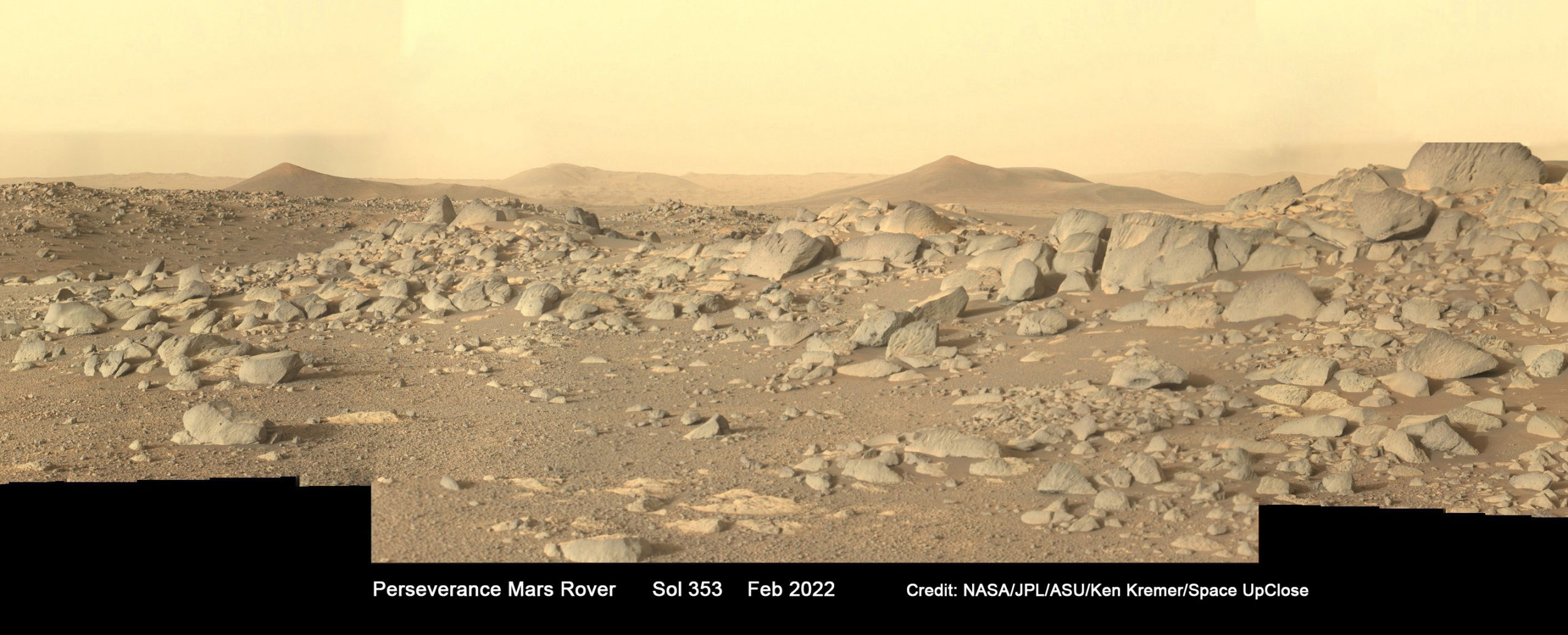
CAPE CANAVERAL, FL – NASA’s Perseverance rover is celebrating the first ‘landiversary’ since touching down on the Red Planet one year ago, on Feb. 18, 2021 along with the first Martian helicopter her cohort Ingenuity, with a series of great scientific accomplishments – including collecting the first six rock core samples for return to Earth -and much more in store ahead in the years to come in the continuing journey of exploration and discovery and searching for signs of potential ancient life at Jezero Crater.
The six-wheeled scientist “has notched up a slew of firsts since touching down on Mars one year ago, on Feb. 18, 2021, and the six-wheeled scientist has other important accomplishments in store as it speeds toward its new destination and a new science campaign,” said NASA.
“The rover has racked up a series of accomplishments, including new distance records, as it reaches the end of the first of several planned science campaigns on the Red Planet.”
The SUV-sized 1 ton 1,025 kilograms) Perseverance is the heaviest and most technologically advanced emissary from Earth ever to soft land on the 4th rock from the Sun
You can see and experience some of the magnificent vistas visible to Perseverance traversing at her approximate current location, via my new Mars mosaics image creations stitched together from raw images snapped by Perseverance on Sol 353, 354 and 358 – corresponding to Earth days Feb. 16, 17 and 21, 2022.
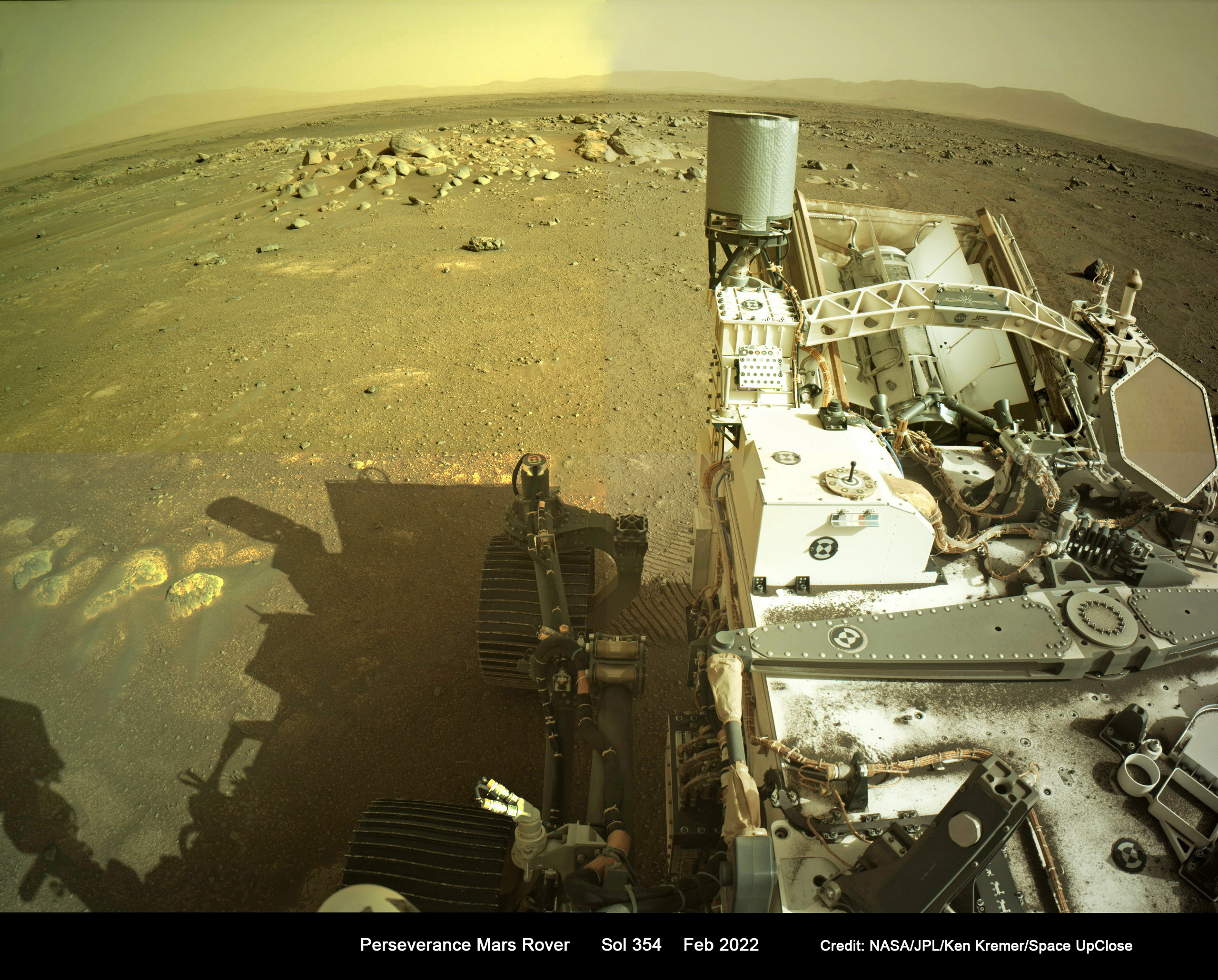
After a year surveying the floor of Jeero Crater floor, the six whhelled robot is heading back to her landing site before embarking on a trek to the craters breathtaking and science target rich hills
To date Perseverance has collected six rock core samples that will eventually be transported back to Earth for high powered analysis by the most advanced science and research instruments available – as part of the first leg of the joint NASA-ESA Mars Sample Return (MSR) campaign culminating in the early to mid-2030s.
Perseverance also served as a kind of control station for the Ingenuity Mars helicopter – the first aircraft to fly on another planet. Ginny has far suppassed expectation flying 19 increasing complex times so far – compared to a goal of merely 5 more simple sorties.
The robot has also successfully carried out the first ‘in situ’ demonstrations to convert carbon dioxide (comprising 96% of Mars atmosphere) into oxygen (which is present in only trace amounts) – which is critical for the ability of future human astronauts to ‘live off the land’ so to speak.
“The rover collected the first rock core samples from another planet (it’s carrying six so far), served as an indispensable base station for Ingenuity, the first helicopter on Mars, and tested MOXIE (Mars Oxygen In-Situ Resource Utilization Experiment), the first prototype oxygen generator on the Red Planet.”
I’ve now been on Mars for a full (Earth) year! Many firsts on an ambitious to-do list:
✅ Collected first rock cores from another planet
✅ Served as base station for #MarsHelicopter
✅ Extracted oxygen from thin Martian air
✅ Set driving recordsMore: https://t.co/ycR7IcZe0m pic.twitter.com/ZPg8NfH169
— NASA's Perseverance Mars Rover (@NASAPersevere) February 18, 2022
MOXIE is a first of its kind technology demonstration experiment aimed at “isolating and storing oxygen on Mars to help power rockets that could lift astronauts off the planet’s surface.”
These devices might also one day provide breathable air for future astronauts living on Mars so it doesnt need to be brought from Earth at enormous costs.
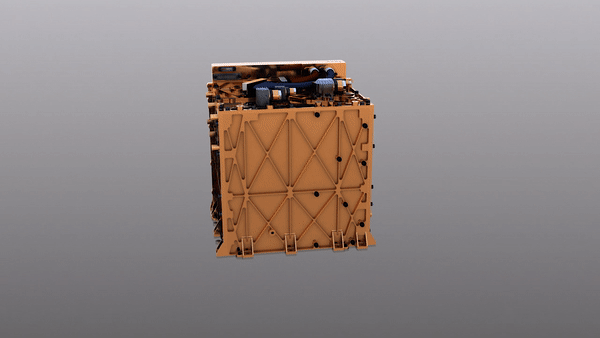
The first MOXIE demo of the toaster sized hardware was conducted on Sol 60 of the mission on April 20, 2021.
“Time flies when you’re exploring another planet! This week marks my one-year landiversary on Mars (Feb. 18) and I have several drives planned and more rocks to see. Meanwhile, my team back on Earth has various ways you can celebrate my first year at Mars: go.nasa.gov/3uQuURw,” the rover tweeted.
Time flies when you’re exploring another planet! This week marks my one-year landiversary on Mars (Feb. 18) and I have several drives planned and more rocks to see. Meanwhile, my team back on Earth has various ways you can celebrate my first year at Mars: https://t.co/iF4lZGRAtQ pic.twitter.com/wteqteWkJZ
— NASA's Perseverance Mars Rover (@NASAPersevere) February 15, 2022
“The samples Perseverance has been collecting will provide a key chronology for the formation of Jezero Crater,” said Thomas Zurbuchen, associate administrator of NASA’s Science Mission Directorate in Washington. “Each one is carefully considered for its scientific value.”
As the rover celebrates the remarkable ‘landiversary’ of Year 1 on Mars she has also nearly completed her first science campaign in Jezero Crater.
“Using a drill on the end of its robotic arm and a complex sample collection system in its belly, Perseverance is snagging rock cores from the crater floor – the first step in the Mars Sample Return campaign.”
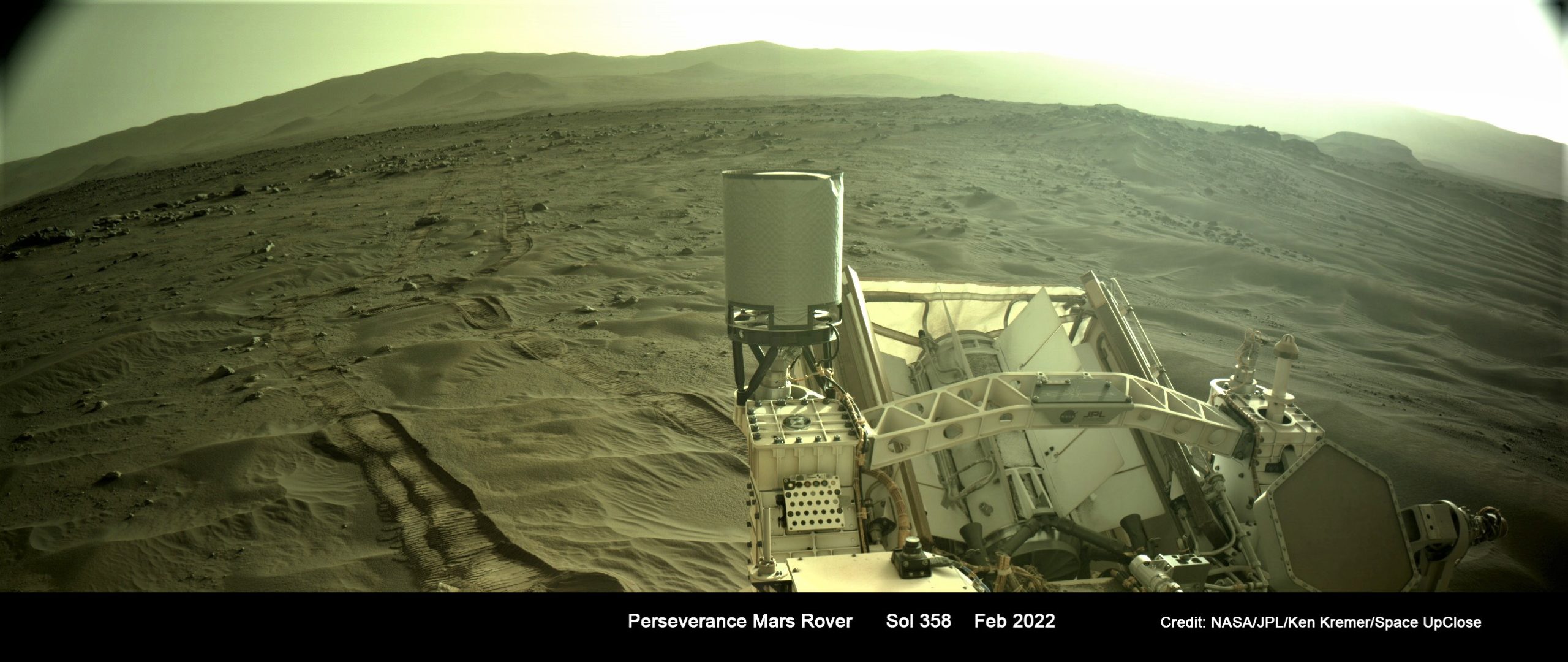
Jezero was chosen as the robots landing site because it contained a lake billions of years ago and features some of the oldest rocks Mars scientists have been able to study up close.
“Rocks that have recorded and preserved environments that once hosted water are prime locations to search for signs of ancient microscopic life.”

And just last week Perseverance also broke the record for the most distance driven by a Mars rover in a single day!
Perseverance traveled almost 1,050 feet (320 meters) on Feb. 14, 2022, or Sol 351 of the mission.
“And it performed the entire drive using AutoNav, the self-driving software that allows Perseverance to find its own path around rocks and other obstacles,” the team explained.
Meanwhile Ingenuity recently completed its 19th flight.
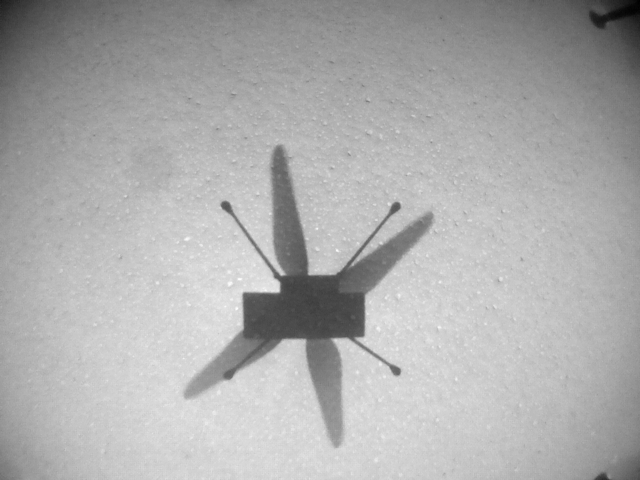
In fact Percy and Ginny will meet up again soon at their original landing site
“Ingenuity is still doing well, and recently completed its 19th flight! You can see its location marked on the map above, as it works its way back toward our landing site (where I’m also heading),” the team tweeted.
Ingenuity is still doing well, and recently completed its 19th flight! You can see its location marked on the map above, as it works its way back toward our landing site (where I'm also heading).
Interactive map: https://t.co/uPsKFhW17J
— NASA's Perseverance Mars Rover (@NASAPersevere) February 15, 2022
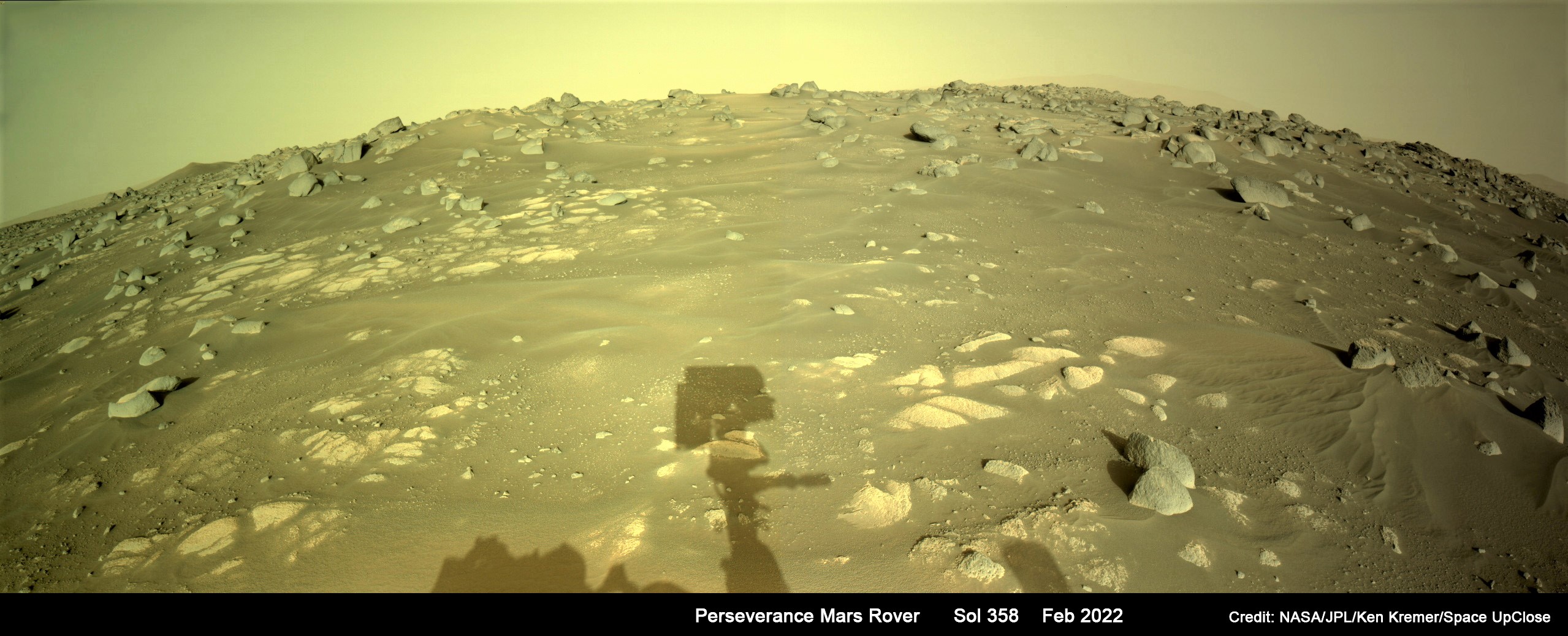
Further details from NASA:
Two more samples will be collected in coming weeks from the “Ch’ał” rock type (named with the Navajo term for “frog”), a set of dark, rubbly rocks representative of what’s seen across much of the crater floor. If samples of these rocks are returned to Earth, scientists think they could provide an age range for Jezero’s formation and the lake that once resided there.
Scientists can approximate the age of a planet or moon’s surface by counting its impact craters. Older surfaces have had more time to accumulate impact craters of various sizes. In the case of the Moon, scientists were able to refine their estimates by analyzing Apollo lunar samples. They’ve taken those lessons to narrow down the age estimates of surfaces on Mars. But having rock samples from the Red Planet would improve crater-based estimates of how old the surface is – and help them find more pieces of the puzzle that is Mars’ geological history.
“Right now, we take what we know about the age of impact craters on the Moon and extrapolate that to Mars,” said Katie Stack Morgan, Perseverance’s deputy project scientist at NASA’s Jet Propulsion Laboratory in Southern California, which manages the rover mission. “Bringing back a sample from this heavily cratered surface in Jezero could provide a tie-point to calibrate the Mars crater dating system independently, instead of relying solely on the lunar one.”
The mission hasn’t been without challenges. The rover’s first attempt at drilling a rock core came up empty, prompting an extensive testing campaign to better understand fragile rocks. The team also needed to clear out pebbles that had dropped into the part of the sampling system that holds the drill bits.
Perseverance’s airborne companion, NASA’s Ingenuity Mars Helicopter, has proven similarly plucky: It was grounded for almost a month following a dust storm before recently resuming its flights. Originally slated to fly five times, the rotorcraft has successfully completed 19 flights now, providing a new perspective of Martian terrain and helping Perseverance’s team to plan the path ahead.
To the west of “Octavia E. Butler Landing,” where Perseverance started its journey, are the remains of a fan-shaped delta formed by an ancient river as it fed the lake in Jezero Crater. Deltas accumulate sediment over time, potentially trapping organic matter and possible biosignatures – signs of life – that may be in the environment. That makes this destination, which the mission expects to reach this summer, a highlight of the year to come.
More About the Mission
A key objective for Perseverance’s mission on Mars is astrobiology, including the search for signs of ancient microbial life. The rover will characterize the planet’s geology and past climate, pave the way for human exploration of the Red Planet, and be the first mission to collect and cache Martian rock and regolith (broken rock and dust).
Subsequent NASA missions, in cooperation with ESA (European Space Agency), would send spacecraft to Mars to collect these sealed samples from the surface and return them to Earth for in-depth analysis.
…
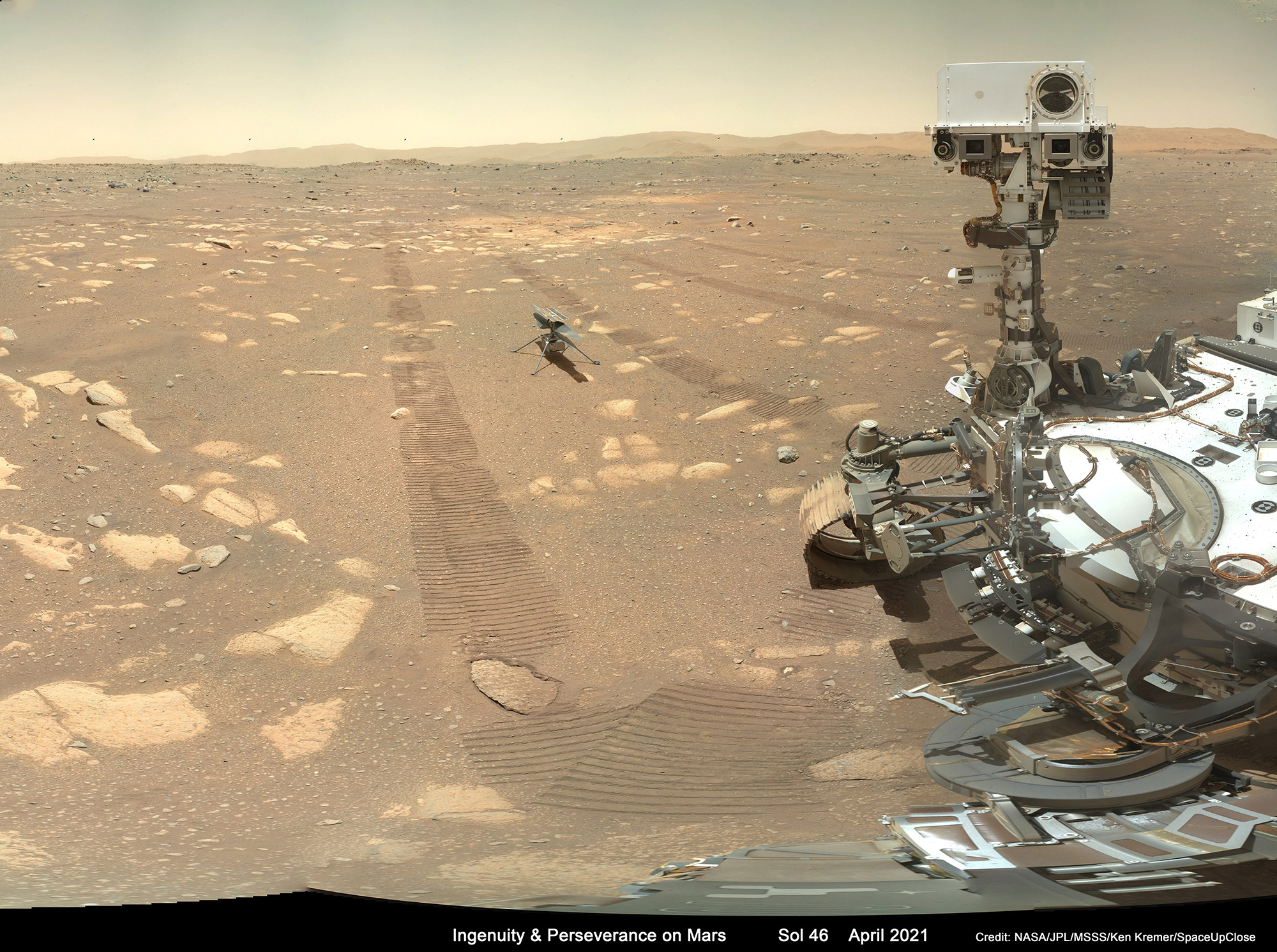
Watch Ken’s continuing reports about Mars Perseverance and Curiosity rovers, JWST, IXPE, DART, SpaceX Crew and Cargo Dragons, Artemis, SLS, Orion and NASA missions, Lucy Asteroid mission, SpaceX Starlink, Blue Origin and Space Tourism, Commercial Crew and Starliner and Crew Dragon and onsite for live reporting of upcoming and recent SpaceX and ULA launches including Crew 1 & 2 & 3, ISS, Solar Orbiter, NRO spysats and national security missions and more at the Kennedy Space Center and Cape Canaveral Space Force Station.
Stay tuned here for Ken’s continuing Earth and Planetary science and human spaceflight news: www.kenkremer.com –www.spaceupclose.com – twitter @ken_kremer – email: ken at kenkremer.com
Dr. Kremer is a research scientist and journalist based in the KSC area, active in outreach and interviewed regularly on TV and radio about space topics.
………….
Ken’s photos are for sale and he is available for lectures and outreach events
Please consider supporting Ken’s work by purchasing his photos and/or donating at Patreon:
https://www.patreon.com/kenkremer
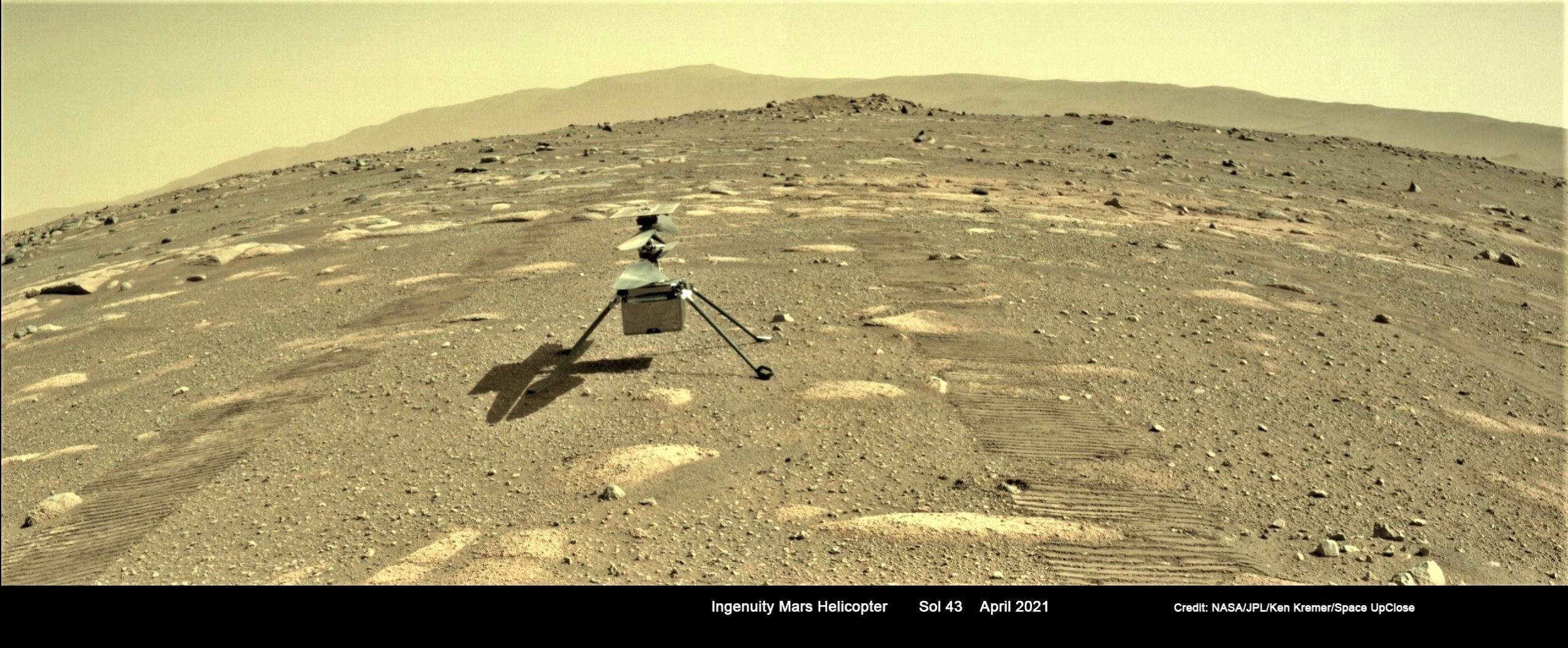
x



